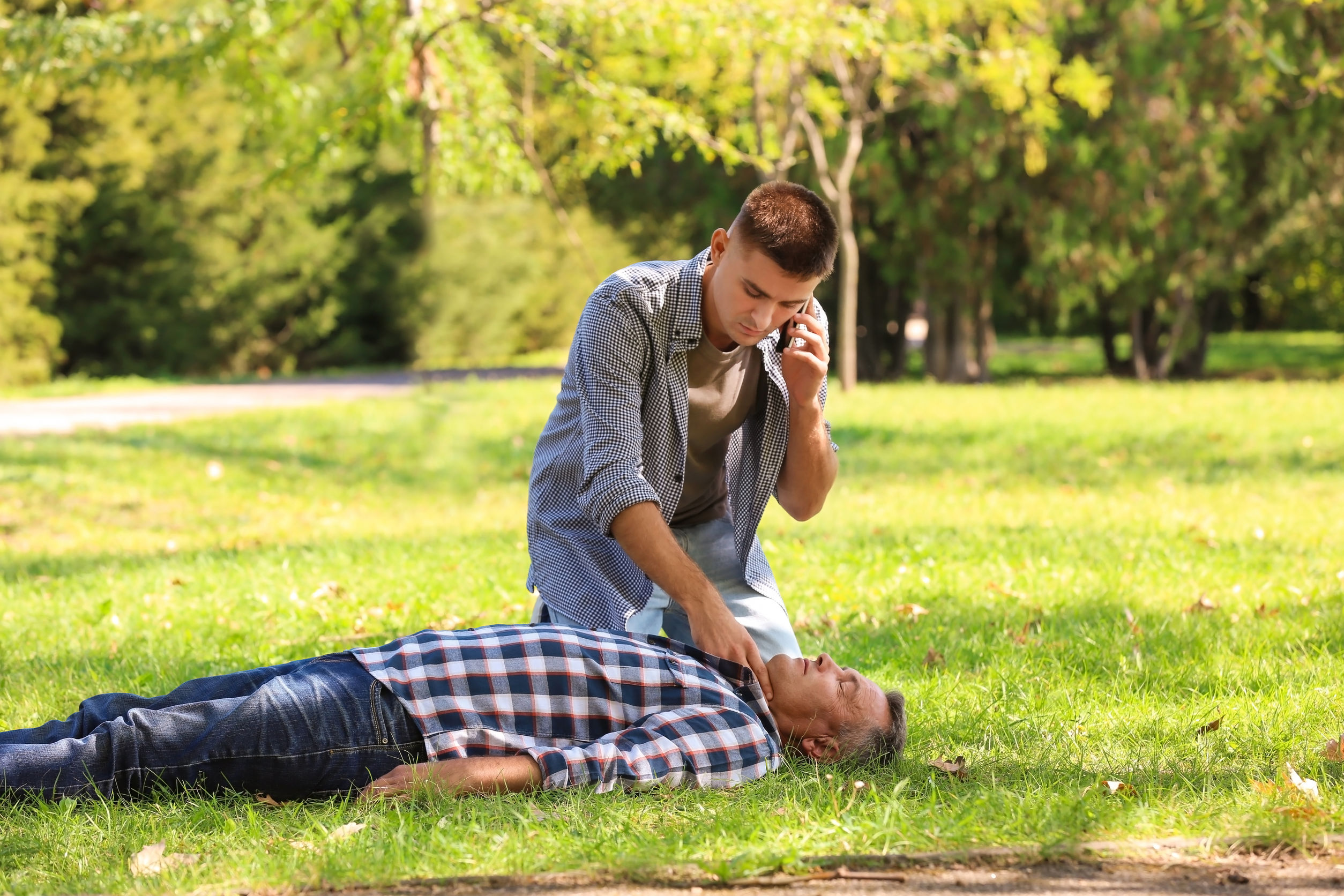
A medical emergency can happen anytime and anywhere. When a person suffers from a Sudden Cardiac Arrest, it can be very distressing. People witnessing the event can panic and not respond. Those who are certified in CPR may respond or may not depend on their confidence in their training. To help gain confidence in knowing what to do in getting the right people to provide proper care confidently can be accomplished through six simple steps.
Every time you go out in public, you need to be aware of your surroundings. Have you seen where it looks like someone is sick or ill, and everyone around them seems to ignore that person as if they do not want to get involved?
We encourage you to stay aware of your surroundings because you never know who's the life you may save. Disasters happen when you least expect it, and it is not if it happens to you, but when.
When you find someone injured or suffering from sudden cardiac arrest (SCA), you need to respond fast. That is by activating your emergency response team or call 911.
They will direct you to a dispatch officer who will guide you in the step by step acts to help the victim. The dispatch officer will activate the first responders to the scene.
When you find the victim not breathing and possibly without pules, you need to start Cardio Pulmonary Resuscitation (CPR). CPR will start forcing blood throughout the body to preserve life. You can provide traditional CPR of 30 compressions to 2 breaths, or if you do not feel comfortable with giving breaths, you can provide compression-only CPR. When you start CPR, be sure to have someone try to find an Automated External Defibrillator (AED).
If you can get an AED to the victim within 10 minutes from the cardiac event, you can greatly increase the chance of survival. The Automated External Defibrillators will shock the heart and help reset the malfunction of the heart. Every minute counts when a person suffers from cardiac arrest, and if the AED is not used within 10 minutes, the shock could be ineffective. Having the AED in place as soon as possible is why we have AED units in many public places. If you wait for the Paramedics to provide the AED, it could be too late.
When the Emergency Medical Services arrive, they will take over the CPR activities from the by-standards. They will work on the patient and stabilize them for transport. If it is a sudden cardiac arrest, then the paramedics will continue CPR and Advance Life Support (ALS) to stabilize the patient. The goal is to get the victim to the hospital as soon as possible.
The road to recovery can be a long one. The six steps of survival are paramount in saving a life. If you follow these steps correctly, especially the first three steps, you can increase survival by up to 70 percent. That is why the Beating Heart Center is here to help teach you the steps to save a life. We do not mean for you to be a hero, but being able to save the lives of those you love is the best gift for your family and friends.
When the Paramedics arrive at the hospital, the Emergency Team takes over. They will utilize ALS care till they have stabilized, diagnosed, and remedy the cause of his cardiac event. In post-cardiac care, the patient is placed in ICU in the hospital to be monitored and assess the damages. During this time, we determine the severity of cardiac injury and start the trend towards recovery.
Recovery is a new step in the American Heart Association's new curriculum for the year 2020. After a cardiac event, the patient will need therapy and watch for any possible relapse. They will have to change their lifestyle habits and will take the support of friends and family.